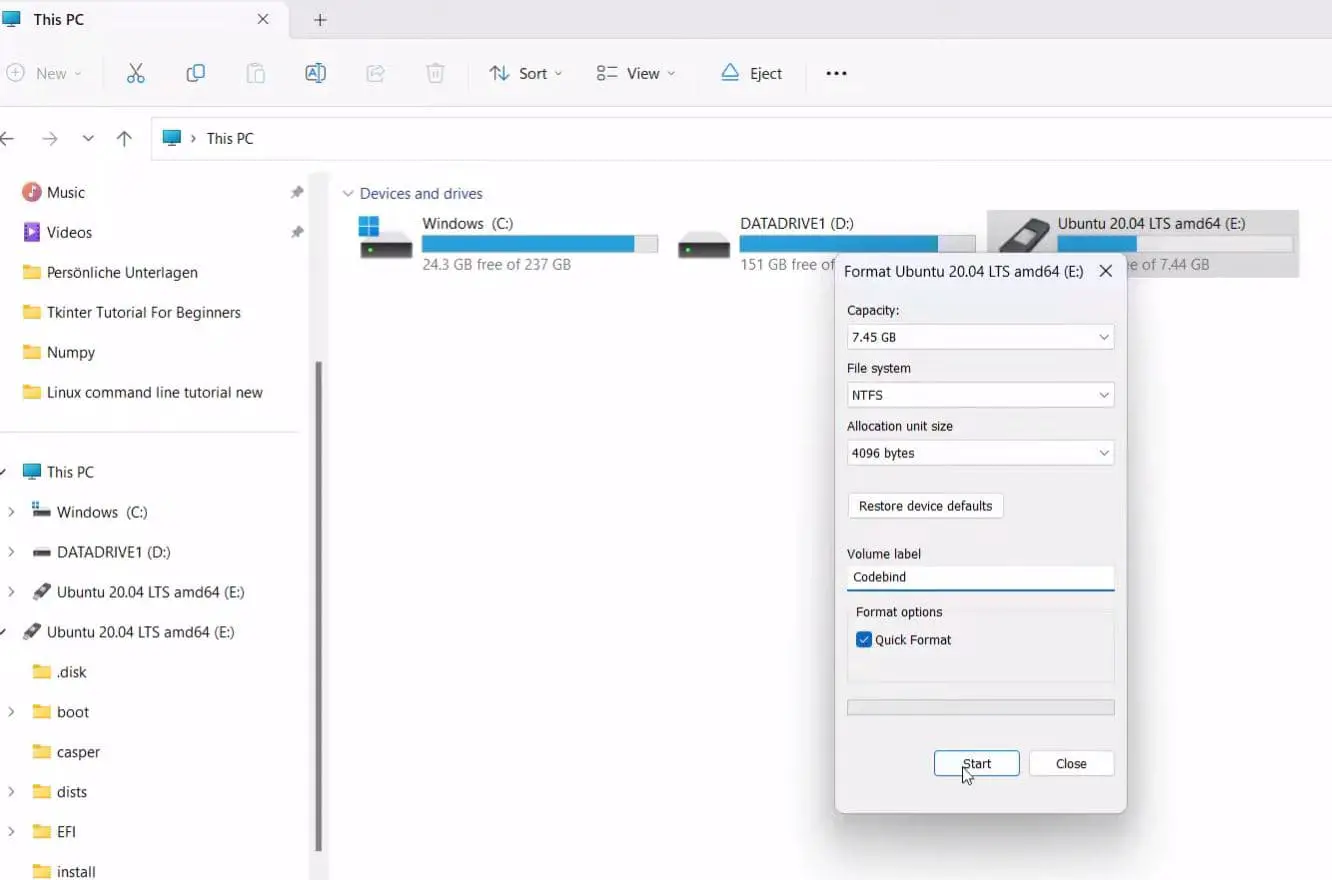File History is a useful feature in Windows 11 that allows you to automatically back up and save copies of your files to an external drive or network location. You can choose which folders to include, how often to back up, and how long to keep the backups. File History can help you restore your files in case of accidental deletion, corruption, or ransomware attacks. However, at times, you may notice, File History not working in Windows 11, and shows an error message saying “File History doesnt recognize this drive“. Few users report errors where File History fails to recognize a specific drive, preventing the backup process. This issue can arise due to various reasons, including connectivity problems, drive compatibility issues, drive letter conflicts, or file system discrepancies. This article explores some possible solutions to fix File history doesn’t recognize this drive error Windows 11.
File History not working in Windows 11
File History feature, the built-in backup solution automatically saves copies of your files to a chosen drive, ensuring you can recover previous versions if the original is lost or damaged. However, there are several possible reasons cause file history not working, display error File History Doesn’t Recognize This Drive. It may be the drive is not connected properly or has a loose cable. The drive is encrypted or has password protection, it’s not compatible with file history or Windows 11.
- File History may fail if the selected external drive or network location is not properly connected.
- Incompatibility between the external drive and Windows 11 can prevent File History from functioning.
- Conflicts with drive letters, especially if assigned to other connected drives, can disrupt File History operations.
- File History requires the external drive to have the NTFS file system for proper functionality.
- If there is not enough free space on the destination drive, File History may be unable to store backup copies.
- Corruption in the File History configuration file can lead to malfunctions. Resetting settings may be necessary.
- Antivirus or security software may interfere with File History. Temporarily disabling such software can help diagnose the issue.
Reconnect the Backup Drive
Loose cables or faulty USB ports can disrupt this connection, leading to drive recognition error. Check and Ensure secure and proper connection between the external drive and the system its essential for File History to function correctly.
- Unplug the external drive.
- Inspect the USB cable for any damage.
- Reconnect the drive to an alternative USB port using a reliable cable.
Check Drive Compatibility
File History only supports NTFS drives, so if your drive is formatted with FAT32, exFAT, or any other file system, you need to reformat it with NTFS. However, be aware that reformatting will erase all the data on the drive, so make sure you have a backup before proceeding.
- Connect your external drive to your PC and open File Explorer.
- Right-click on the drive and select Properties.
- On the General tab, look for the File System section and see what it says.
- If it says NTFS, you can skip this solution and move on to the next one. If it says anything else, you need to reformat the drive with NTFS.
To reformat the drive, right-click on it again and select Format.
- On the Format window, choose NTFS from the File system drop-down menu and click Start.
- Wait for the process to complete and then try to use File History again.
Verify Drive Letter
Sometimes, Drive letter conflicts can disrupt the File History function. Verifying and adjusting drive letters through Disk Management ensures proper recognition.
- Right-click on the Start menu and select “Disk Management.”
- Right-click on the external drive, choose “Change Drive Letter and Paths,” and assign an available, non-conflicting drive letter.
Click OK and restart your computer. This can help File History find your drive if it was assigned a different letter by Windows.
Restart File History Service
Sometimes, glitches or temporary issues affect File History function on Windows 11. Restarting the File History service can resolve glitches or temporary issues preventing proper drive recognition.
- Open the Run dialog by pressing Win + R.
- Type services.msc and press Enter.
- Locate “File History Service,” right-click, and choose “Restart.”
Check USB Power Management
USB power management settings play a crucial role in maintaining stable connections with external drives. Disabling USB selective suspend helps to mitigate potential disruptions caused by power-saving features.
- Right-click on the Start menu and select “Device Manager.”
- Expand “Universal Serial Bus controllers.”
- Right-click on each USB Root Hub, navigate to “Properties,” and go to the “Power Management” tab.
- Uncheck “Allow the computer to turn off this device to save power.”
Recreate File History Configuration
File History configuration corruption can be a persistent problem. Recreating the configuration from scratch can be a proactive measure to eliminate potential issues and restore proper recognition.
If you are using BitLocker or another encryption software, you need to unlock your drive before using File History. You can do this by opening File Explorer and clicking on the lock icon next to your drive. Enter your password or recovery key and click Unlock. If you are using password protection software, you need to disable it or uninstall it from your drive.
System logs can serve as a valuable resource for uncovering errors or conflicts impacting File History. Examining these logs can provide insights into specific issues that may require attention.
If none of the above solutions work, you might need to use a different external drive that is compatible with File History and Windows 11. You can also use a network location, such as a NAS device or a shared folder on another computer. To do this, open Settings and click on System. Click on Backup and then Add a network location under Back up to a different place
Also read:

